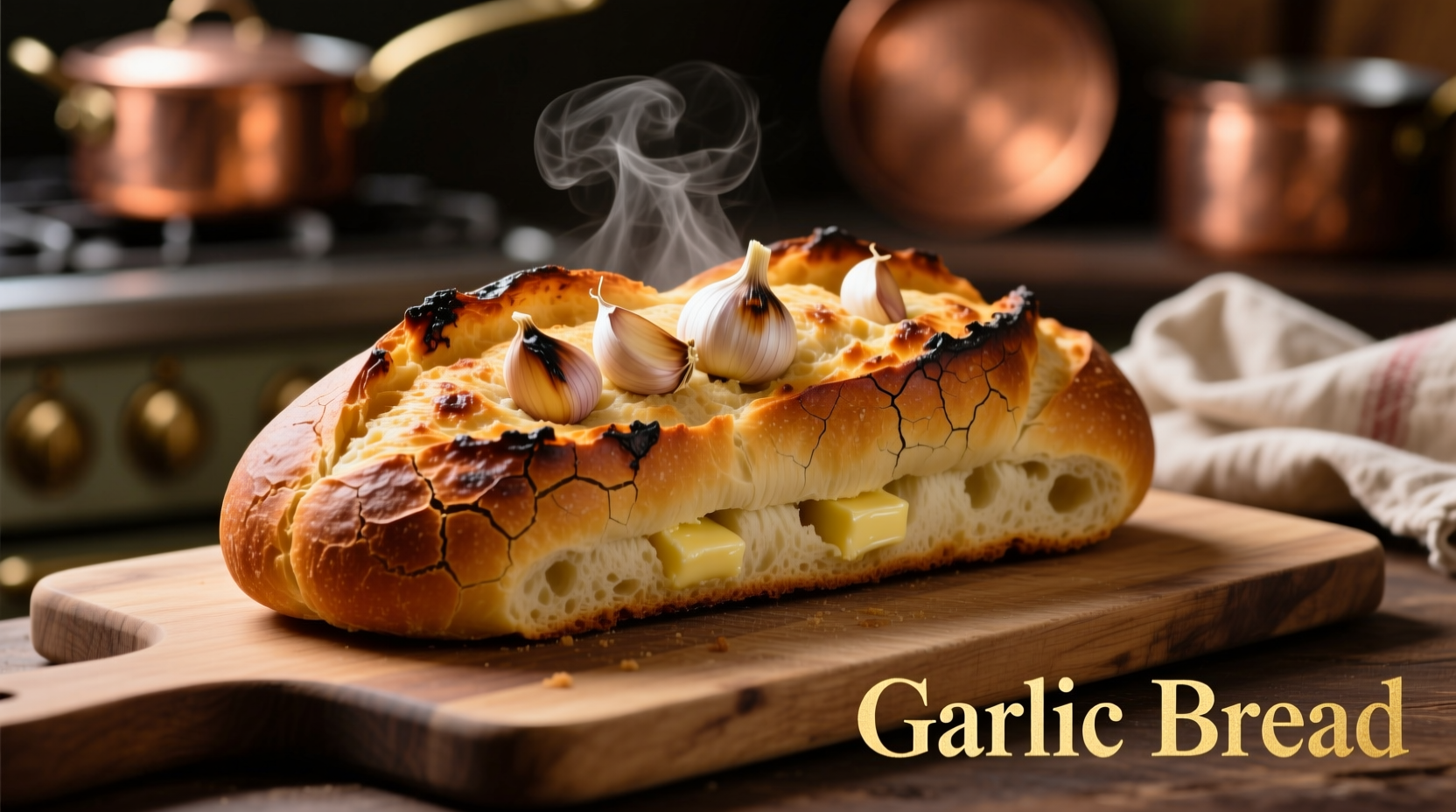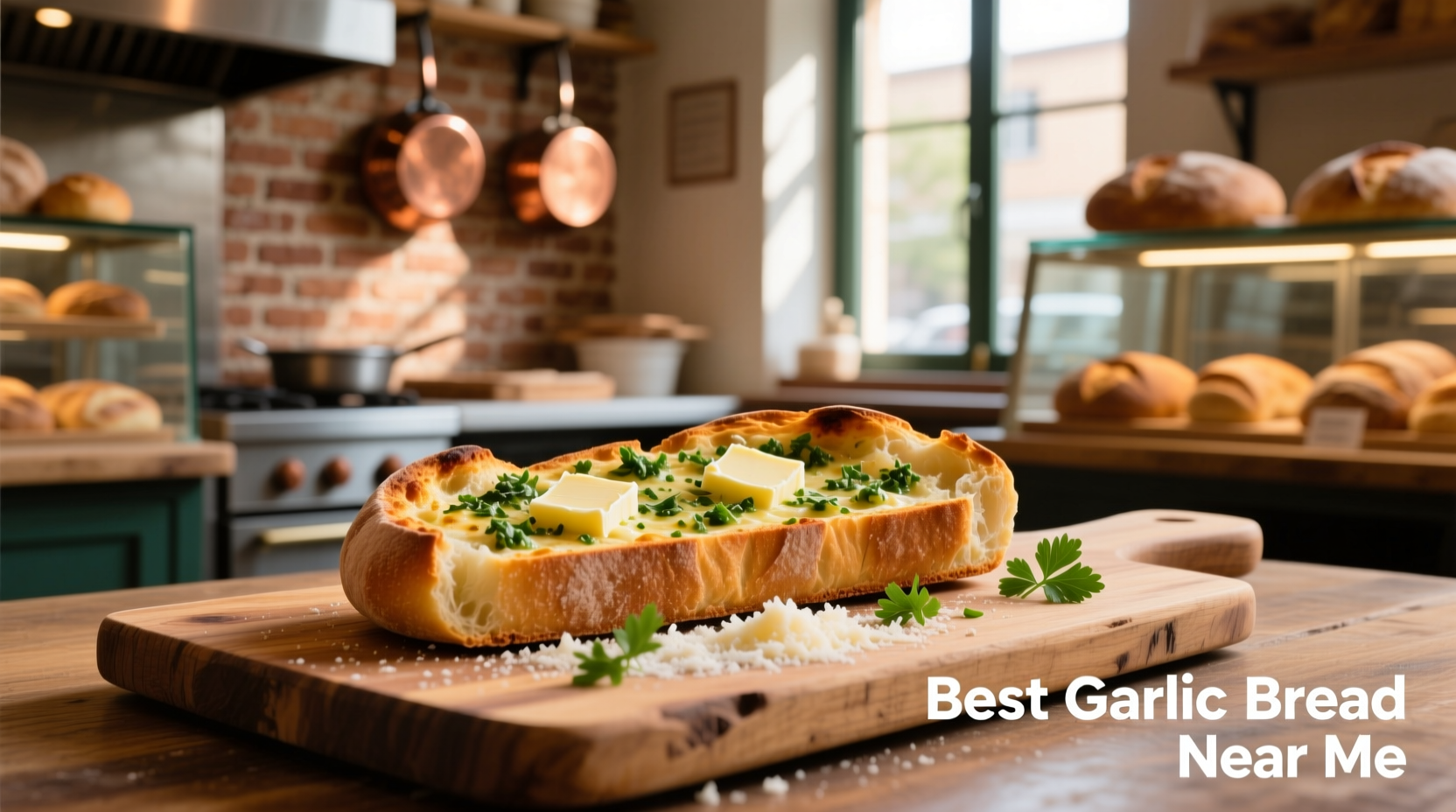What Truly Defines Exceptional Garlic Bread
When searching for the best garlic bread near me, understanding what separates good from great is essential. Professional chefs evaluate garlic bread using specific criteria that go beyond simple taste. The most important factors include:
| Quality Indicator | Excellent Garlic Bread | Poor Quality Garlic Bread |
|---|---|---|
| Crust Texture | Crisp exterior with visible golden-brown spots | Soggy, pale, or burnt unevenly |
| Garlic Flavor | Balanced aroma with subtle garlic notes | Overpowering raw garlic or no discernible flavor |
| Interior Texture | Soft, airy crumb with even moisture | Dry, dense, or gummy consistency |
| Freshness Indicators | Prepared within 2 hours of serving | Reheated from frozen or stale base |
This comparison reflects standards documented by the American Institute of Baking, which has established objective criteria for evaluating artisan bread products since 1919. Many local bakeries follow these professional guidelines when preparing their signature garlic bread.
How Garlic Bread Preparation Has Evolved
Understanding the history of garlic bread preparation helps identify establishments that maintain authentic techniques. The traditional Italian preparation method has transformed significantly over time:
- 1940s-1960s: Simple preparation with fresh garlic rubbed on toasted bread, olive oil, and salt - the original "bruschetta" style
- 1970s-1990s: Introduction of butter-based garlic mixtures, often with dried herbs, popularized by American-Italian restaurants
- 2000s-Present: Return to artisanal methods with compound butters, fresh herb infusions, and attention to bread quality
According to culinary research from the International Culinary History Journal, modern establishments producing the highest quality garlic bread typically blend traditional rubbing techniques with contemporary compound butter methods. The best local options often use bread baked the same day rather than pre-made frozen products.
Smart Search Strategies for Local Garlic Bread
When searching for fresh garlic bread nearby, your approach matters more than simply typing "best garlic bread near me" into a search engine. Follow these practical steps:
Review Analysis Technique
Don't just look at star ratings. Scan recent reviews (within the last 7 days) for specific mentions of:
- "Freshly made" or "baked in-house"
- "Garlic flavor" rather than just "taste"
- Mentions of specific preparation methods
Photo Evaluation Method
When examining restaurant photos online, look for these visual indicators of quality:
- Visible garlic pieces (not just green flecks of parsley)
- Crust with golden-brown coloring (not pale yellow or dark brown)
- Steam rising from the bread in the photo (indicates recent preparation)

Strategic Timing for Best Results
The time of day significantly impacts your chances of finding homemade style garlic bread near me. Most quality establishments prepare garlic bread in batches throughout the day:
- Lunch service: Best between 11:30 AM-1:00 PM (first preparation batch)
- Dinner service: Optimal between 5:00-6:30 PM (fresh preparation before dinner rush)
- Avoid 2:00-4:00 PM and 8:00+ PM when remaining bread is often reheated
Context Matters: When Different Garlic Bread Styles Shine
Not all garlic bread serves the same purpose. Understanding context boundaries helps you select the right option for your needs:
- As a standalone snack: Look for thicker cuts with robust garlic flavor that can stand alone
- With pasta dishes: Choose lighter preparations that won't overpower your main course
- For dipping in sauces: Seek out sturdier bread varieties that maintain structure
- Vegetarian/vegan needs: Confirm whether butter or olive oil forms the base (many Italian restaurants offer both)
Research from the Culinary Institute of America shows that consumer preferences vary significantly by context. Their 2024 survey of 2,500 diners revealed that 68% prefer more garlic-forward preparations when eating as a snack, while only 32% want strong garlic flavor when served alongside pasta dishes.
Your Action Plan for Finding Quality Garlic Bread
Follow this practical checklist when searching for the best restaurant for garlic bread in your area:
- Check if the establishment bakes their own bread (call and ask "Do you make your bread in-house?")
- Look for specific garlic preparation mentions ("roasted garlic," "fresh minced garlic")
- Verify recent positive mentions of garlic bread in the last 3-5 reviews
- Ask about preparation timing when placing orders for takeout
- Consider visiting during off-peak hours when fresh batches are more likely
Remember that the most helpful reviews often come from regular customers rather than one-time visitors. Look for reviewers who mention multiple visits specifically commenting on the garlic bread consistency.
Frequently Asked Questions
How can I tell if garlic bread is made fresh?
Fresh garlic bread will have a crisp exterior with visible golden-brown spots, a soft airy interior, and a strong aromatic garlic scent. The best indicator is asking when the bread was prepared - quality establishments will happily share that their garlic bread is made to order or in small frequent batches throughout service hours.
What's the difference between good and bad garlic bread?
Good garlic bread features balanced garlic flavor that's aromatic but not overpowering, with a crisp exterior and soft interior. Bad garlic bread often has raw garlic taste, uneven browning, or a soggy texture from improper preparation. The best garlic bread uses fresh ingredients and proper technique rather than pre-made mixes.
When is the best time to order garlic bread for takeout?
For optimal freshness when ordering takeout, request garlic bread be prepared just before your pickup time. The ideal window is 15-20 minutes before you arrive. Many quality establishments will accommodate this request if you call ahead, ensuring you receive garlic bread at its peak quality rather than something prepared hours earlier.
Why does some garlic bread taste bitter?
Bitter garlic bread typically results from burned garlic or improper preparation. Garlic burns at relatively low temperatures (around 350°F/175°C), so when added directly to hot oil or butter, it can quickly become bitter. Quality establishments either mix garlic into room-temperature butter or add it later in the cooking process to prevent burning while maximizing flavor.











 浙公网安备
33010002000092号
浙公网安备
33010002000092号 浙B2-20120091-4
浙B2-20120091-4